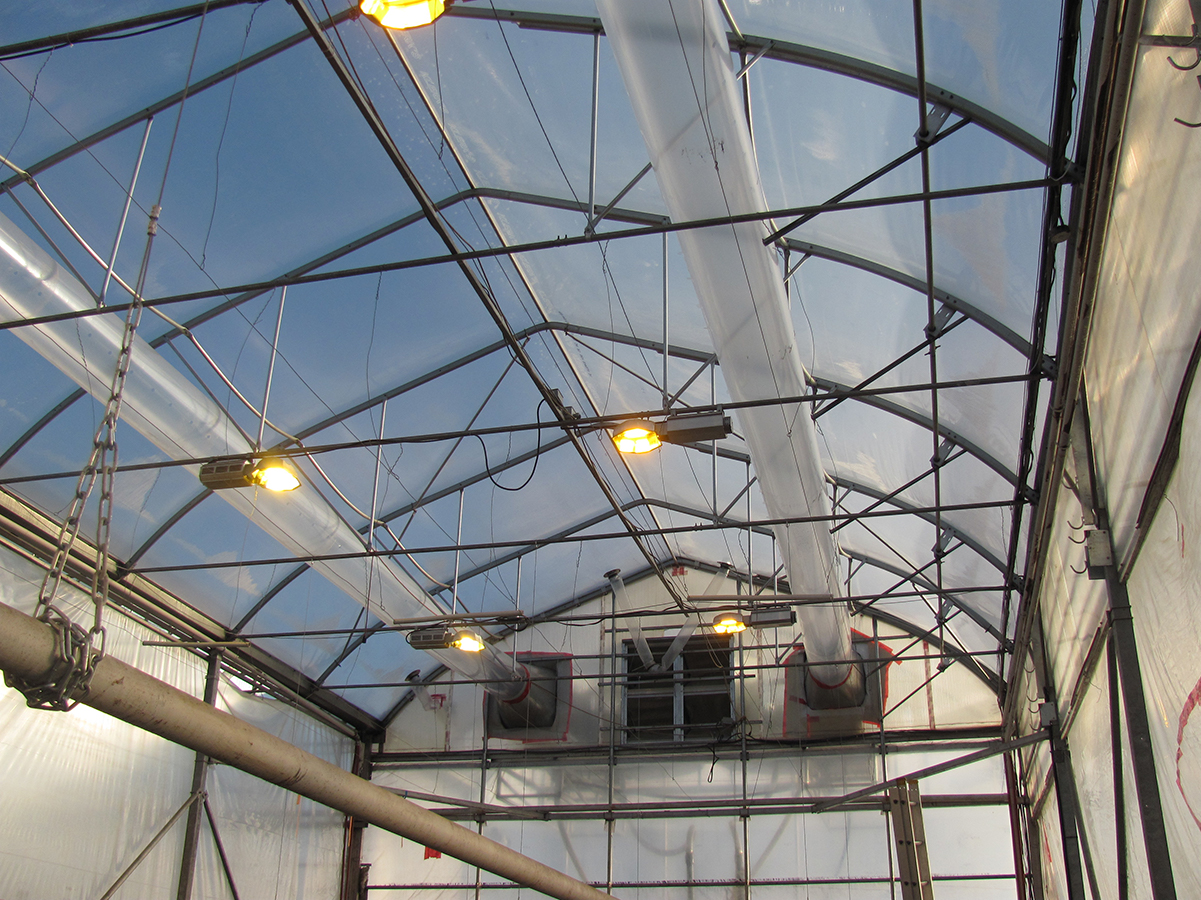Organic Research: Venting Problems?

How Geothermal Systems May Help Organic Greenhouse Management
This article originally appeared in Organic Science Canada magazine, Issue 1, 2018, as part of Organic Science Cluster II (OSCII), a national research and development endeavour led by the Organic Federation of Canada and the Organic Agriculture Centre of Canada at Dalhousie University OSCII with funding provided by Agriculture and Agri-Food Canada and by over 65 organic sector partners. We are thrilled to make this research available and accessible to organic farmers in the BC Organic Grower.
Regulating the greenhouse environment (e.g. humidity, carbon dioxide (CO2) levels, temperature) while maintaining optimal growth conditions is a constant challenge for greenhouse producers. This project explores the use of geothermal and heat exchanger systems to provide better climate control in commercial greenhouses, optimize productivity, and reduce heating costs.
Complete climate control in greenhouses is difficult and complex: humidity, CO2 levels, and temperature are all things needed to create optimal growing environments. Canada’s seasonal changes in temperature present an additional difficulty as cooling measures are needed in the summer months, and heating is required in the winter. Many northern greenhouses reduce heat in the summer through natural ventilation systems. Vents or windows in the greenhouses rely on wind and thermal buoyancy to move air, instead of a powered fan. However, natural ventilation can increase heating costs by up to 10%, and deplete CO2 levels necessary for ideal growth conditions. Therefore, many ventilated greenhouses incur extra costs by needing to provide supplemental CO2.
Building on previous knowledge
Geothermal cooling systems and heat exchangers may be a way to reduce heating costs, and dehumidify greenhouses without natural ventilation. Geothermal heat pumps work by using seasonal thermal energy stores. The abundant heat created in the summer can be removed from overly hot greenhouses, and stored in a thermal bank in the soil, reducing the need to ventilate and loose crucial CO2 levels. Organic Science Cluster I data also showed that water pumped from a high ground water table can dehumidify greenhouses; however, a more water efficient method is needed for larger scale, commercial greenhouses.
Dr. Damien De Halleux of Université Laval along with Dr. Martine Dorais of AAFC set up trials at the greenhouses of Serres Jardin Nature in New Richmond, QC and L’Abris Végétal in Compton, QC. Trials were set up in natural ventilation cooled greenhouses and heat-pumpcooled semi-closed greenhouses. The trials were to examine and compare the fruit quality from tomato plants, growth data, dehumidification strategies, CO2 levels, and greenhouse climate.
Cold water from the water table was used as a source for cooling for the natural ventilation and the semiclosed greenhouses at Serres Jardin Nature. At L’Abris Végétal, the source for cooling was the neighbouring soil of the greenhouses.
Using geothermal and heat exchanger systems, it was possible to limit the amount of ventilation needed in the semi-open greenhouses. This reduction in ventilation allowed for better climate management, and increased the productivity of the crops. Reducing the amount of ventilation also reduced the loss of CO2 from the greenhouse atmosphere. Cooling in the control greenhouses resulted in 421ppm of CO2 in the greenhouse atmosphere versus 652-654ppm of CO2 in the experimental greenhouses, which was an improvement toward optimal growth conditions.
Combining old and new techniques
Geothermal and heat exchanger systems limit the need to ventilate greenhouses, allowing for better climate control, however humidity control still remains a major issue. At this time, it is deemed appropriate to continue using traditional, natural ventilation during critical dehumidification times to reduce susceptibility of crops to fungus and disease.
Click for more Organic Science Cluster II research.
Click to read Organic Science Canada magazine.
Click to see all the OSCII Contributing partners.
Researchers: Damien De Halleux (Université Laval), Martine Dorais (AAFC – Université Laval)
Partners: Growing Forward 2, L’Abri Végétal, Serres Jardin Nature
Feature image: Geothermal cooling and heat exchangers in an experimental greenhouse at Serres Jardin Nature. Credit: Organic Science Cluster.

